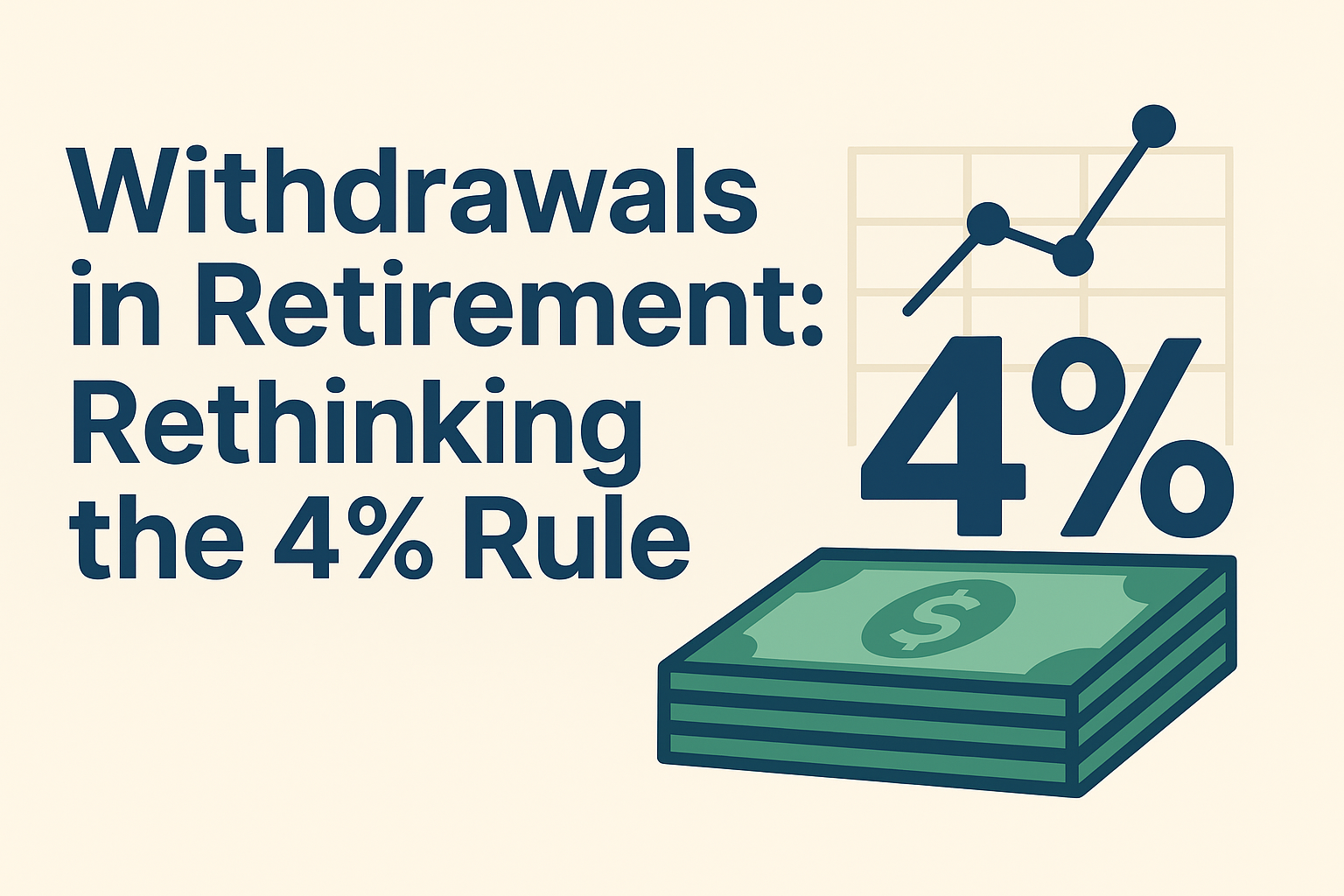Withdrawals in Retirement: Rethinking the 4% Rule


When people approach retirement, one of the biggest questions they ask is: How much can I safely withdraw from my portfolio each year? For some, the focus is making sure their money lasts a lifetime. For others with more resources, it’s about aligning withdrawals with life style goals, family support, and legacy planning. Either way, understanding withdrawal rates is a key part of retirement income strategy.
Many subscribe to the 4% rule—withdraw 4% of your portfolio in the first year, then adjust that amount annually for inflation. While it provides a helpful benchmark, it is far from a perfect fit for every retiree. Market conditions, life expectancy, and personal goals are all factors that must be acknowledged and influence what an appropriate withdrawal rate really looks like.
Retirement spending also tends to be less predictable than a steady percentage suggests. Some years bring higher costs, whether from travel, home projects, or meaningful gifts to family. Other years may require less. That’s why flexibility often matters as much as the initial withdrawal rate itself.
When creating a withdrawal strategy, we consider factors such as:
- Time horizon and goals – Whether the focus is sustaining income, maximizing lifestyle, or building a legacy
- Investment mix – Equity-heavy portfolios may support greater long-term growth but bring more volatility
- Other income sources – Social Security, pensions, or rental income can reduce reliance on portfolio withdrawals
- Spending volatility – Retirement often includes irregular expenses like trips, celebrations, or healthcare needs
- Flexibility – The ability to adjust spending in response to market performance helps protect long-term security
- Tax efficiency – Coordinating withdrawals from taxable, tax-deferred, and tax-free accounts can improve after-tax income and preserve wealth
Many retirees benefit from “dynamic” withdrawal strategies that adapt over time. This might mean starting conservatively and adjusting upward after strong market years or using spending guardrails to keep your plan on track.
Planning software can greatly aid in mapping out a strategic withdrawal rate. At RAI, we incorporate both withdrawal strategies and historical market conditions to calculate what we call a “funded score.” This score is generated by running 1,000 possible simulations of the future, giving insight into the strength of a plan. The goal is always to design a strategy that provides confidence—helping families and individuals live comfortably throughout retirement while preserving legacy assets for loved ones.
Ultimately, withdrawal planning is less about finding a single “safe” number and more about matching your financial resources to your lifestyle, values, and long-term goals. With a thoughtful strategy and regular reviews, you can feel confident enjoying retirement while keeping your wealth working for the future.




